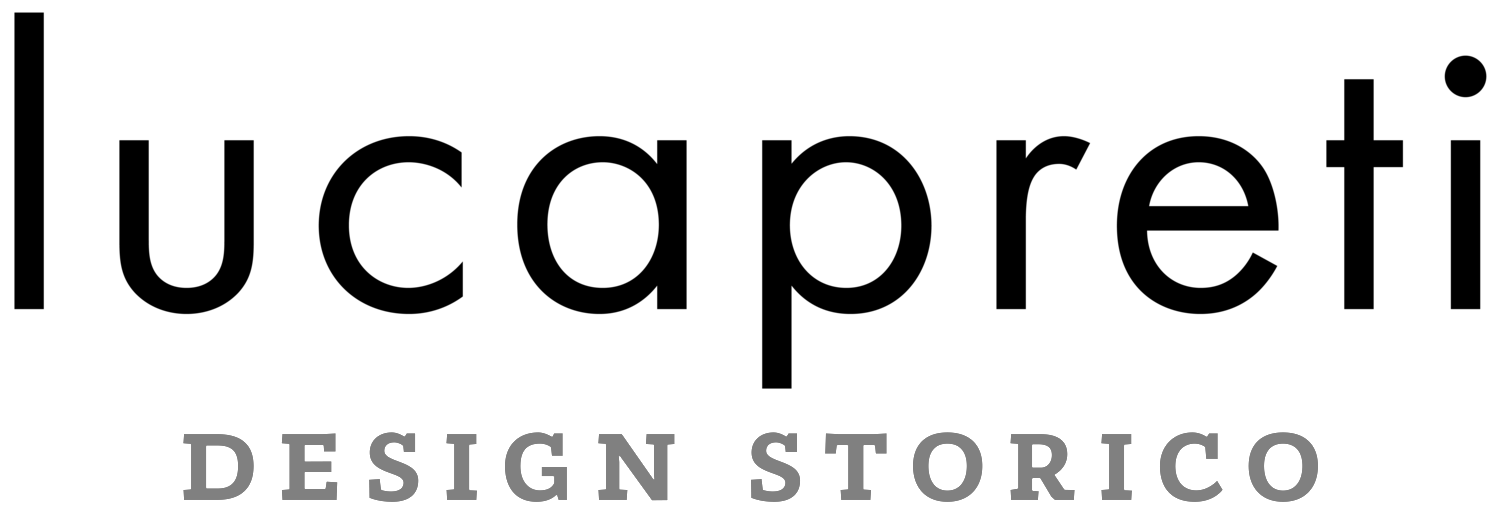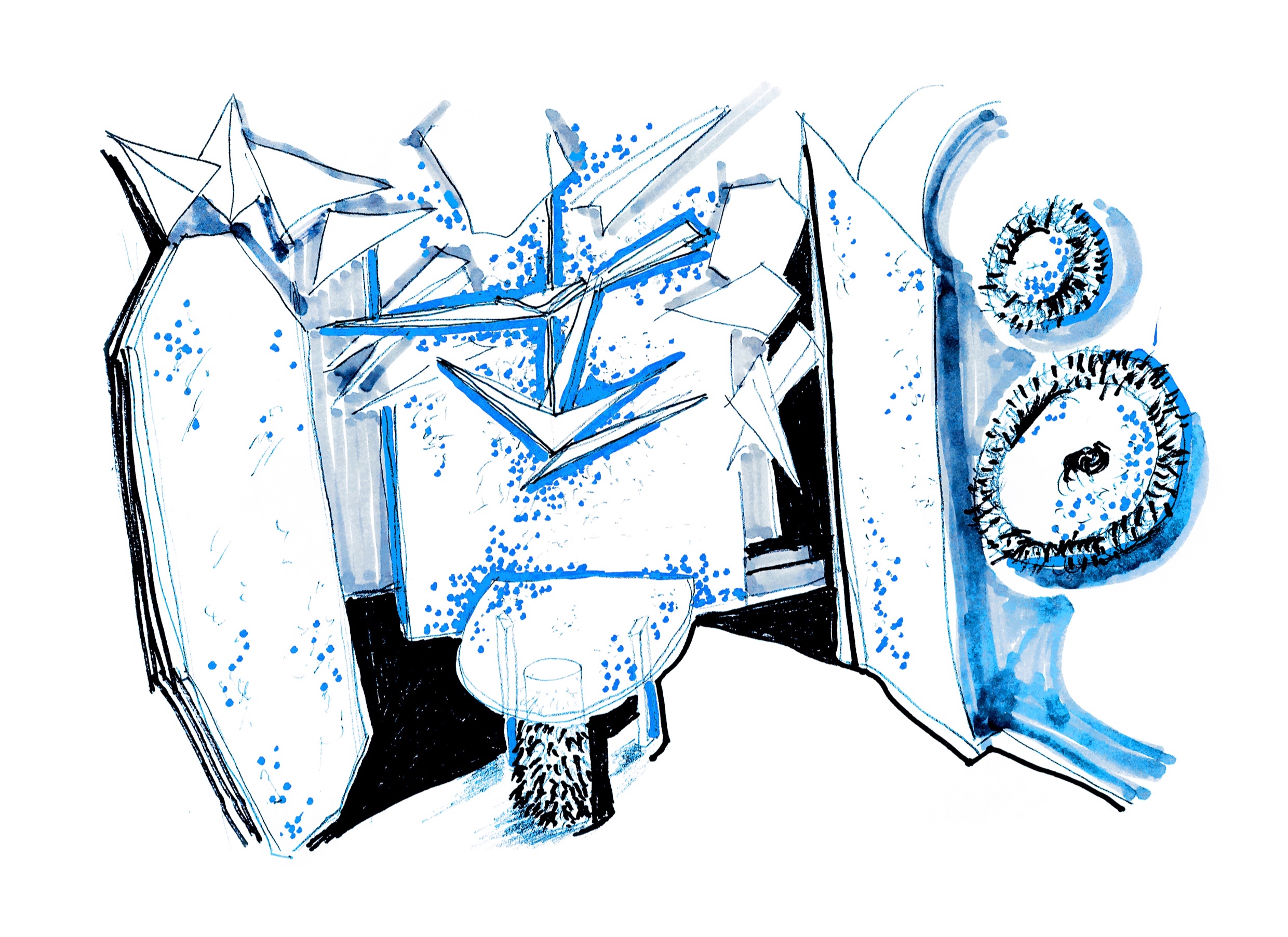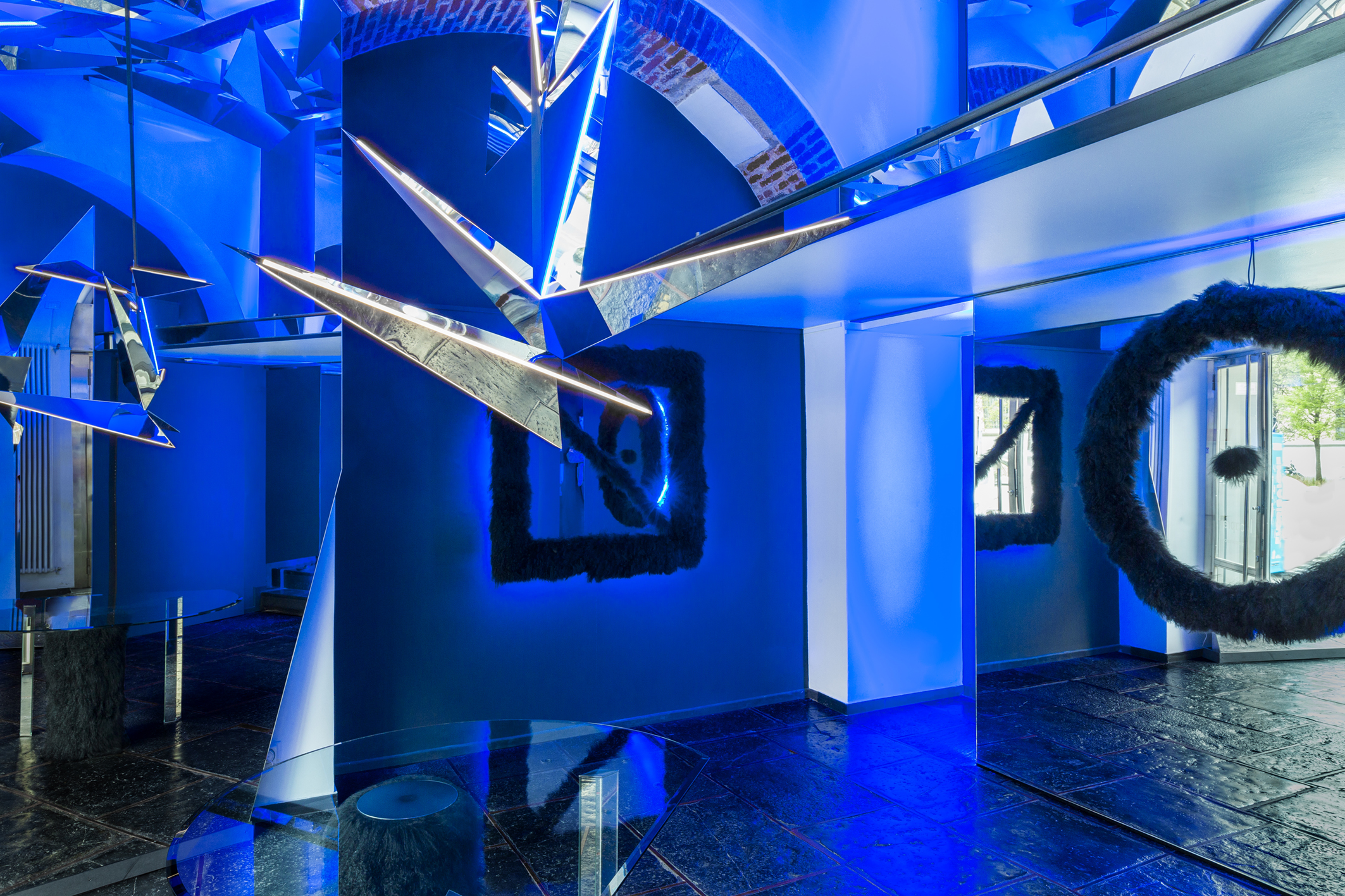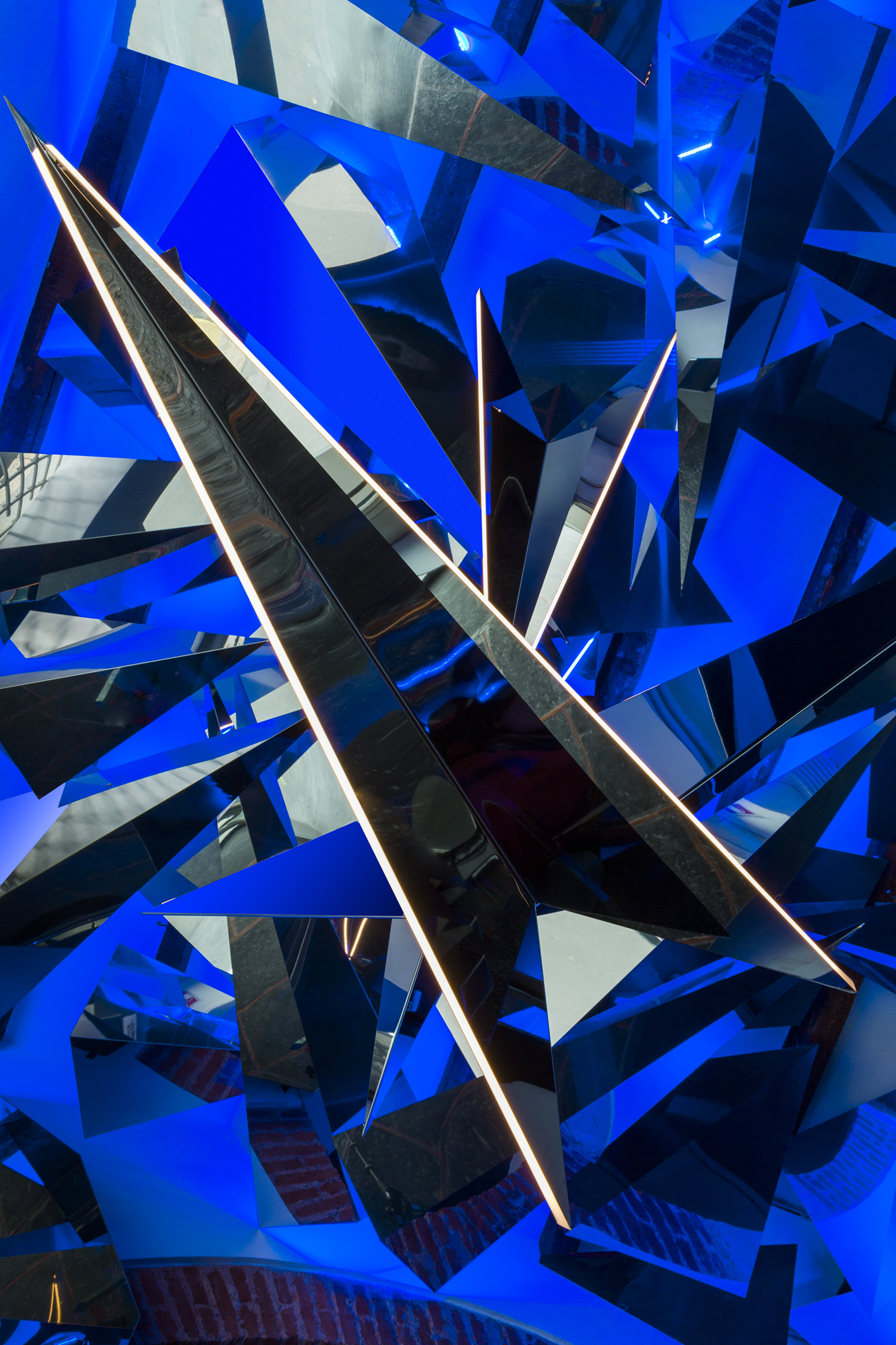italiano →
Hard & Soft is a project by artist architect designer Nanda Vigo, specifically conceived and developed for Luca Preti’s exhibition space in Milan. In occasion of the Fuorisalone 2019 the gallery has been completely transformed by means of some interventions playing on the contrast between mirror surfaces (Hard component) and fuzzy parts of Mongolia Fur (Soft component). Contrast enhanced by the presence of the lighting element declined in blue, the key color of buddhist philosophy.
H&S mirror 1
© M.Tedeschi
H&S mirror 2
© M.Tedeschi
Stars fell on Alabama
© M.Tedeschi
H&S mirror 3 H&S mirror 4
© M.Tedeschi
H&S Table
© M.Tedeschi
The relationship between space and light, particularly the artificial one, is a constant within the experimental and multidisciplinary work of Nanda Vigo, who already at the end of the ‘50s set it as the dominant topic of her artistic research: in the Zero House (Casa Pellegrini), a project-manifesto of 1959, the spatiality was defined by light and its interaction with the surfaces made of satin glass. In turn, the disorienting theme Soft, another sensory component aimed at defining the space as an environment, can be traced back to the fuzzy covering of the built-in furniture — particularly the spiral staircase — opposed to the white and polished architectural «body» of the house Lo scarabeo sotto la foglia (The Scarab under the Leaf), of which Gio Ponti entrusted her the design of the interiors (1964-’68).
The two level exhibition space overlooking San Marco street is overhung by a modulated sculptural ceiling whose sharp facets are back-lit by white and blue lights; in addition, the vertical surfaces of the architecture are enhanced by full-height mirror elements — again, back-lit in blue — augmenting the depth of the space and extending it outside. Together with the bright and reflecting ceiling, they generate a dematerialized environment where the dimensions of the space is altered in the visitor’s perception. As always in Vigo’s work, an artistic demand transcends physical reality: mirrors and artificial blue light are its modifiers and one should not be misled, in regard to the true artistic nature of the intervention, by its action on architectural space, involving objects with also a function.
In this perspective are placed, within the installation, the suspended chandelier Stars Fell on Alabama (the name is an homage to the famous jazz song interpreted by Frank Sinatra) and the other realizations in limited edition of the collection produced by Luca Preti, which is contextually presented to the public, thus completing the main concept Hard & Soft: a series of mirrors with Soft, blue back-lit frame, available in a squared version and in three different circular versions, and a dissymmetric table with crystal top, whose structure is partially mirrored and partially with Mongolia Fur. If in former interventions, such as the collection Top (1970) or the Due Più chair (1971), the Soft element used to characterize surfaces normally devoted to a physical contact with the body (seats, backrests, armrests, steps, etc.), visually highlighting the potential of such contact, here are involved parts which semantics is turned upside down: structural elements become accommodating.
The installation as well as the relative collection Hard & Soft arise as a continuation of the collaboration between Nanda Vigo and Luca Preti, which led in 2017 to the realization of Global Chronotopic Experience, presented to the public in October 2018: an all-encompassing space born out of the desire to revisit — amplifying its size and the perception experience — the Ambiente Cronotopico (Chronotopic Environment) originally conceived by Vigo in 1967.
If the environment Global Chronotopic Experience was meant to set up, within the space of the Romanesque church of San Celso, a dimension in its own right, where the visitor could enter and be immersed undisturbed — and (strictly) isolated — the installation-exhibition Hard & Soft, instead, dialogues with the host architecture, the exterior and the furniture elements of the collection, true artworks, wholly belonging to the intervention. Within Nanda Vigo’s research, indeed, Gio Ponti’s view of a «global intervention» is unavoidably subjected to her artistic quest, ultimately resulting in an «artwork inhabited by artworks». In the specific case, the furniture of the collection are destined to outlive the ephemeral intervention; nevertheless, they remain carriers of its «genetic code».
Luigi De Ambrogi










